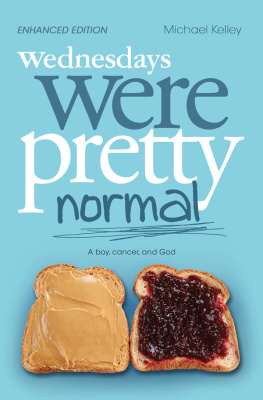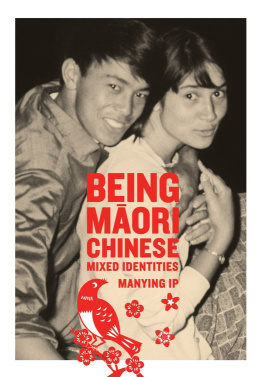PRAISE FOR GAY NEW YORK
A stunning tour de force in lesbian/gay studies and a masterpiece of twentieth-century U.S. social, cultural, and urban history. With the publication of this truly impressive and astonishing work, we now have our most brilliantly researched and fully developed portrait of gay life in this country before World War II.
Newsletter of the Committee on Lesbian and Gay History of the American Historical Association
A brilliant ethnographic analysis.... [Chaunceys] analysis of gay identity illuminates the intricate fabric of gender and sexual meanings in American culture, woven in different class, ethnic, and racial patterns.... His analysis of gay terminology and the discourses of homosexuality is subtle and sophisticated.... But what makes the book so compelling is the way he grounds these matters in the daily life of gay men.
KATHY PEISS, The Nation
A stunning contribution not only to gay history, but to the study of urban life, class, genderand heterosexuality.
Kirkus Reviews
Even if you are not a devotee of theory or history, you will want to read Gay New York for its profusion of anecdotal detailits coordinates of a gay Atlantis, a buried city of Everard Baths, Harlem drag balls, and Vaseline Alley. Chauncey has found evidence... of a gay underworld whose complexity and cohesion no previous historian dared imagine.
WAYNE KOESTENBAUM, Los Angeles Times Book Review
Chaunceys genius is the way he combines real lives and theory... a sharp and readable analysis of the way boundaries between normal and abnormal men bent and blurred in the early part of the century.
Out
Gay New York maintains a consistently high level of theoretical sophistication while never diminishing the fun of reading about gay New Yorks subterranean bathhouses, stylish bars and restaurants, outrageous parties, and campy theatrical events.
Voice Literary Supplement (named one of the Village Voices 25 favorite books of 1994)
Chauncey not only splendidly re-creates this little-known chapter of New York history, but also produces an exquisite story, combining extensive original historical research with captivating narrative passages.
ELAZAR BARKAN, Los Angeles Times Book Review, History Prize citation
Astonishing.... informative, engaging, and ever surprising.
Buffalo News
Chaunceys book breathes a largess of political spirit, a willingness to put treasured truisms to the test of evidence and to evaluate sympathetically the pasts claims for itself. It sustains some of the highest virtues of Ameri-can social history: assiduous archival work, intricate stories, a democratic view of historical agency, a strong overarching interpretation.... Chaunceys meticulous and beautifully accomplished recreation of the citys sexual map emerges from his painstaking research in police and trial records.... But while Chauncey never... suggests that the 1910s and 20s were a golden era of tolerance, he implies that the vitality of the subculture outstripped the forces of regulation.
CHRISTINE STANSELL, The New Republic
A fascinating inventory of a world so long forgotten that it is almost universally believed to have never existed.
The New Yorker
Chaunceys work is not only an affirmation of a resilient, century-old gay culture but an assertion of its central place within the development of modern urban American society.
Washington Blade
Gay New York is one of the most important gay history texts ever written, giving a revealing and entertaining account of an utterly forgotten facet of gay history.... An insightful, eloquent, and ground-breaking work.
Chicago Outlines
A revealing look at urban gay pride and the bars, baths, and immense drag balls that flourished in New York pre-Stonewall and before the closet defined gay life.
U.S. News & World Report
Well and clearly written, based on extensive research and chock-full of riveting incidents and wonderful illustrations, this indispensable book deserves a place in every gay library.
Genre
Compellingly readable.... electrifying... essential reading.
Lambda Book Report

Copyright 1994 by George Chauncey.
Published by Basic Books,
A Member of the Perseus Books Group.
All rights reserved. No part of this book may be reproduced in any manner whatsoever without written permission except in the case of brief quotations embodied in critical articles and reviews. For more information, address Basic Books, 387 Park Avenue South, New York, NY 10016-8810.
Designed by Jessica Shatan
Library of Congress Cataloging-in-Publication Data
Chauncey, George.
Gay New York : gender, urban culture, and the making of the gay male world, 1890-1940 / George Chauncey
p. cm.
Includes bibliographical references and index.
ISBN 978-0-7867-2335-5
1. Gay menNew York (N.Y.)History20th century. 2. Homosexuality, MaleNew York (N.Y.)History20th century.
HQ76.2.U52N53 1994
305.389664097471dc20 | 94-4542 |
CIP |
DHAD 03 04 05 20 19 18 17 16 15 14 13 12
To My Parents
CONTENTS
THIS BOOK HAS BEEN A LONG TIME IN THE MAKING AND WOULD NOT HAVE been possible without the help of many people. It is a pleasure to thank them.
The book began as a dissertation in the History Department of Yale University. I was fortunate to be in a graduate program with Eric Arnesen, Jeanne Boydston, Ann Braude, Ileen DeVault, Dana Frank, Lori Ginzberg, Carol Karlsen, Regina Kunzel, Molly Ladd-Taylor, David Scobey, Amy Stanley, and other students who became my friends and teachers and made Yale a wonderfully collegial and stimulating place to study American history. Many of us were privileged to have Nancy Cott as an advisor. Her enthusiasm for my work, her perceptive criticisms of it, and her breathtaking insights into the problems it addressed, as well as the model of her own scholarship, meant more to me than she could know. John Boswells scholarship, his counsel, and even his disagreements with me inspired, facilitated, and sharpened my work at every stage. David Montgomery profoundly influenced the way I thought about working-class history.
At a time when the federal government denied funding to gay-related research and art, I was fortunate to receive the support of several private foundations and research centers. The Danforth Foundation, the Bush Center in Child Development and Social Policy, the Woodrow Wilson Foundation, the Mrs. Giles Whiting Foundation, and the New York University School of Law made my studies at Yale and the completion of the dissertation possible. A postdoctoral fellowship year at the Rutgers Center for Historical Analysis in 198990 allowed me to begin rethinking the dissertation in a stimulating and collegial environment. I am grateful to Robert Nye, Barbara Sicherman, Jennifer Terry, Edward and Dorothy Thompson, Jacquelyn Urla, and especially John Gillis, the Centers leader, for creating that environment and commenting on my work. A fellowship from the American Council of Learned Societies for recent recipients of the Ph.D., as well as the support of the History Department and the Social Sciences Division of the University of Chicago, gave me the freedom of a years leave of absence in which to finish the manuscript. I am particularly grateful to John Coatsworth, Edward Laumann, and John Boyer for making that year possible.
One of my greatest debts is to the more than seventy men who let me interview them. Although I was able to spend only a few hours with many of them, others became enduring friends. I am deeply grateful to them all for sharing their memories and reflections with me. I have referred to particular interviews only when citing an actual quote or a particular point an interviewee made, but the cumulative experience of having listened to so many men has influenced every line of this book. I am also grateful to Senior Action in a Gay Environment (SAGE), which let me listen to several of the interviews their oral history committee volunteers had recorded, and to Ray Gerard Koskovich for letting me use his interview with Edouard Roditi.
Next page




